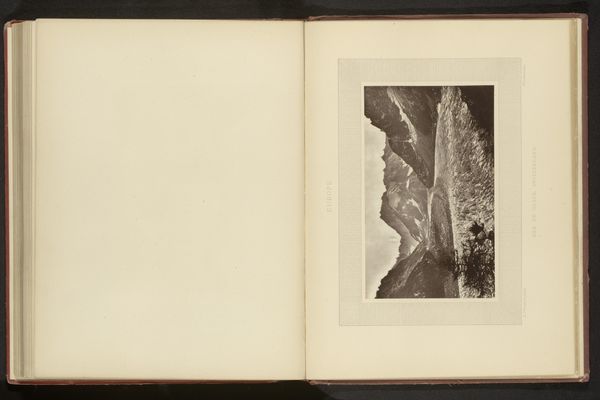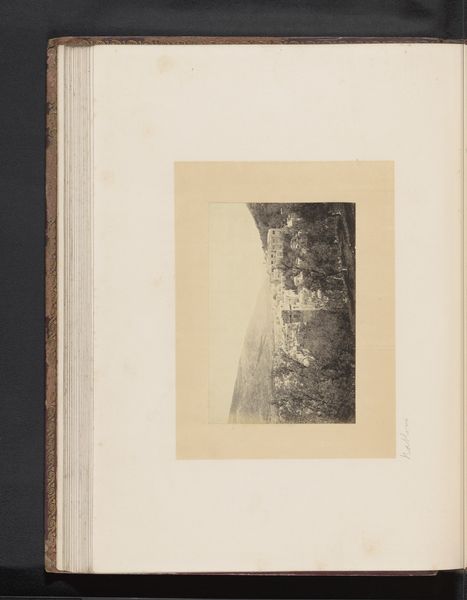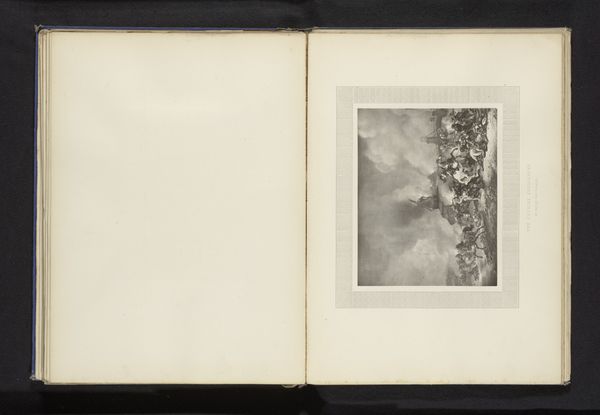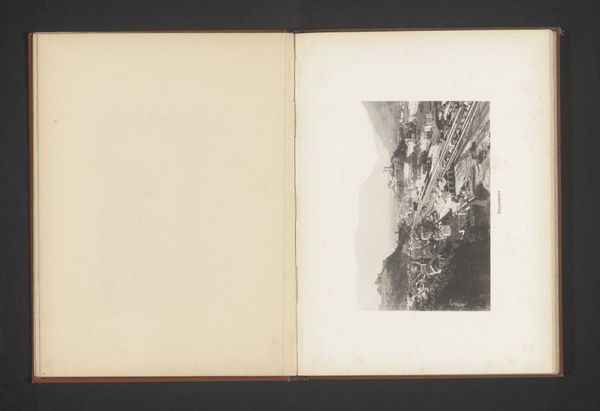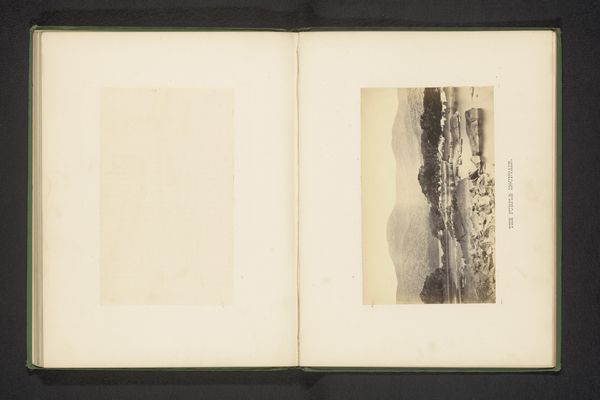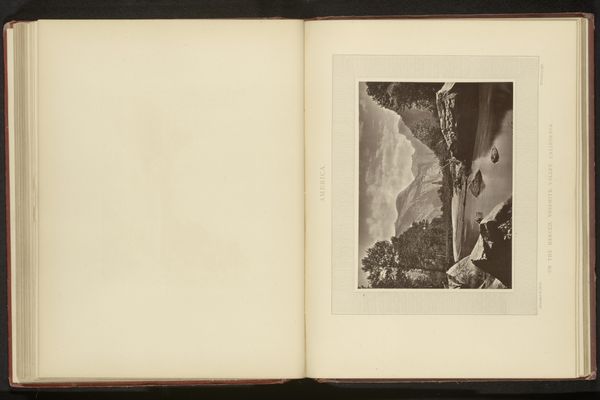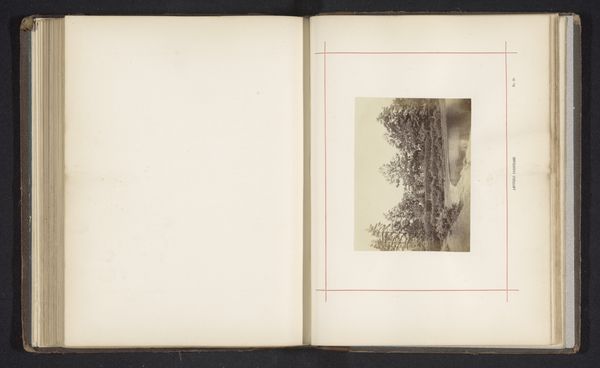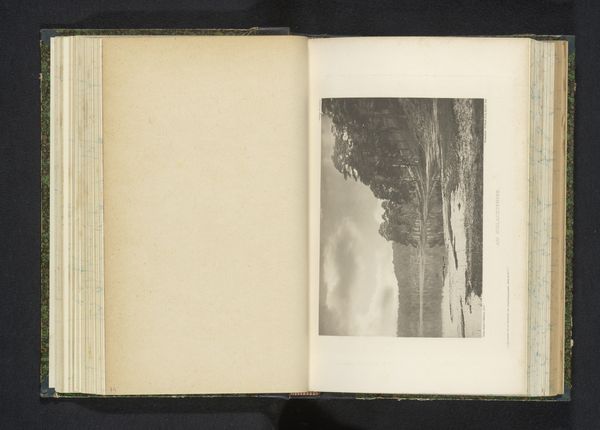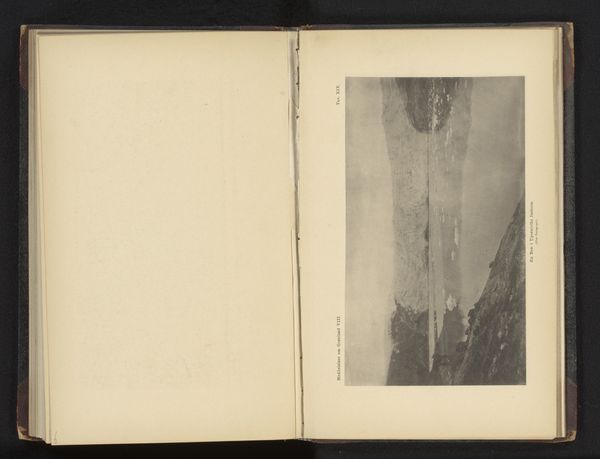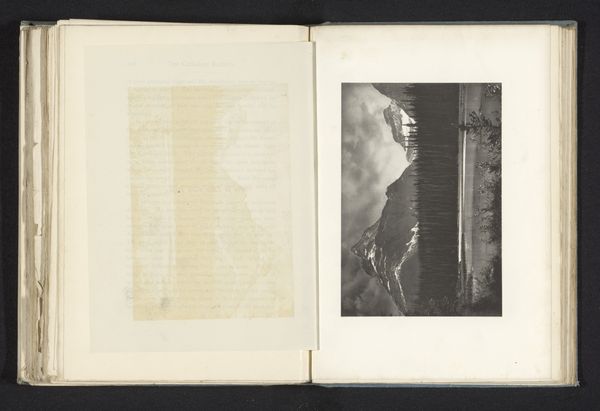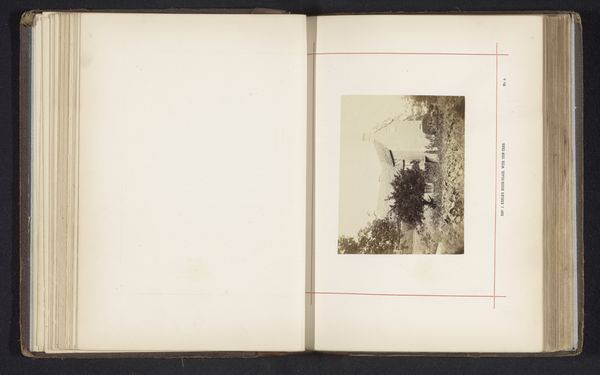
Dimensions: height 101 mm, width 164 mm
Copyright: Rijks Museum: Open Domain
Editor: So this is “Gezicht op Weggis met het Vierwoudstrekenmeer,” which translates to "View of Weggis on Lake Lucerne," created before 1875. It's a photograph, specifically a gelatin-silver print. It’s a serene landscape, almost dreamlike in its softness. How do you interpret this work, especially considering the time it was made? Curator: What strikes me is the power dynamic inherent in landscape photography of this era. Think about who had access to this technology in the 19th century. This image, seemingly objective, is framed by a Western, likely upper-class, gaze. The romanticized view of the Swiss landscape was often consumed by those with the means to travel or acquire such imagery. Editor: That's a perspective I hadn’t considered. So, the photograph isn’t just a neutral recording of a scene? Curator: Exactly. It's crucial to unpack whose perspective is being presented and for what audience. Consider the colonial implications of landscape photography – how were similar images used to promote certain ideologies, perhaps even to justify resource extraction or control of territories? This peaceful scene could mask underlying economic or political realities. What might a photograph of the same landscape by a local person look like? How might it differ? Editor: So you're suggesting that we should always question the seemingly objective nature of photographs, even those of landscapes? Curator: Precisely. We must think about how power, access, and representation intersect. Examining the photographer's identity and the context in which the image was created helps reveal deeper, often unspoken, narratives. Editor: I see. This photo of a lake in Switzerland isn't just a pretty picture; it's a historical document reflecting specific social and economic conditions. Thanks, that's something to think about. Curator: Indeed. Analyzing art through this lens allows us to understand the complex interplay of history, identity, and visual culture. It enriches our appreciation and encourages critical thinking.
Comments
No comments
Be the first to comment and join the conversation on the ultimate creative platform.
